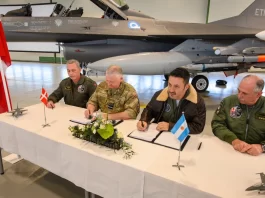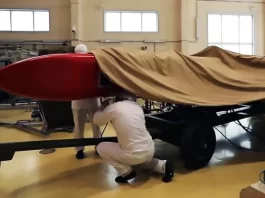In the future, a fleet of advanced satellites circle Earth in low orbit, which will house powerful supercomputers, cutting-edge artificial intelligence systems, and massive cloud data storage. This is the goal of the “Military Space Cloud Architecture” (MILSCA) research project, which was allocated to Leonardo by the Directorate of Segredifesa (Italian National Armaments Directorate). MILSCA is the brainchild of the Italian Defence Ministry’s technology-focused agency (The Directorate of Computer Science, Telematics, and Advanced Technologies), TELEDIFE. The contract is under the National Plan for Military Research (PNRM).
For the first time in Europe, the project attempts to establish a space architecture capable of offering high-performance processing and storage capacity directly in space, similar to how the terrestrial cloud works. The system’s integrated cyber security models will allow faster and more flexible information processing and sharing.
The project intends to create a space architecture capable of providing government institutions and national Armed Forces with high-performance computing and storage capacity directly in space. This will be the first time that this has been done in Europe. It is comparable to what happens with the terrestrial cloud. By incorporating integrated cyber security models into its architecture, the system will ensure that information processing and sharing are carried out with increased speed and flexibility.
A digital twin of the architecture will be created to test the Space Cloud. The Space Cloud will be able to store more than one hundred terabytes of data generated on Earth and in space aboard each satellite in the constellation. Using sophisticated algorithms that use artificial intelligence, machine learning techniques, and big data analysis, it can perform computations with a power that exceeds 250 TFLOPS (250 trillion operations per second) at a single precision. Additionally, it can communicate and exchange data with other satellites autonomously.
Leonardo is at the forefront of the project, including the participation of joint ventures between Telespazio and Thales Alenia Space Technologies. In the course of the study, which will last for twenty-four months, there will be two phases: the first phase will be dedicated to the definition of the system architecture, and the second phase will culminate in the creation of a satellite digital twin using high-performance computing (HPC) and a multi-constellation satellite terminal demonstrator. The purpose of this phase is to simulate various application scenarios within a digital environment.
According to Simone Ungaro, Chief Innovation Officer of Leonardo: In a multi-domain scenario, management, security, and rapid exchange of an ever-increasing amount of data, many of which are tactical, become strategic elements for the country’s defence. The company will be the first in Europe to develop a Space Cloud project, demonstrating the feasibility and benefits of using such an architecture and enabling a new cloud & edge computing paradigm. Leonardo’s know-how will allow the development of a network of Space Cloud to contribute to the processes of digitisation and technological innovation, addressing future challenges to guarantee the needs of government entities and national armed forces.





